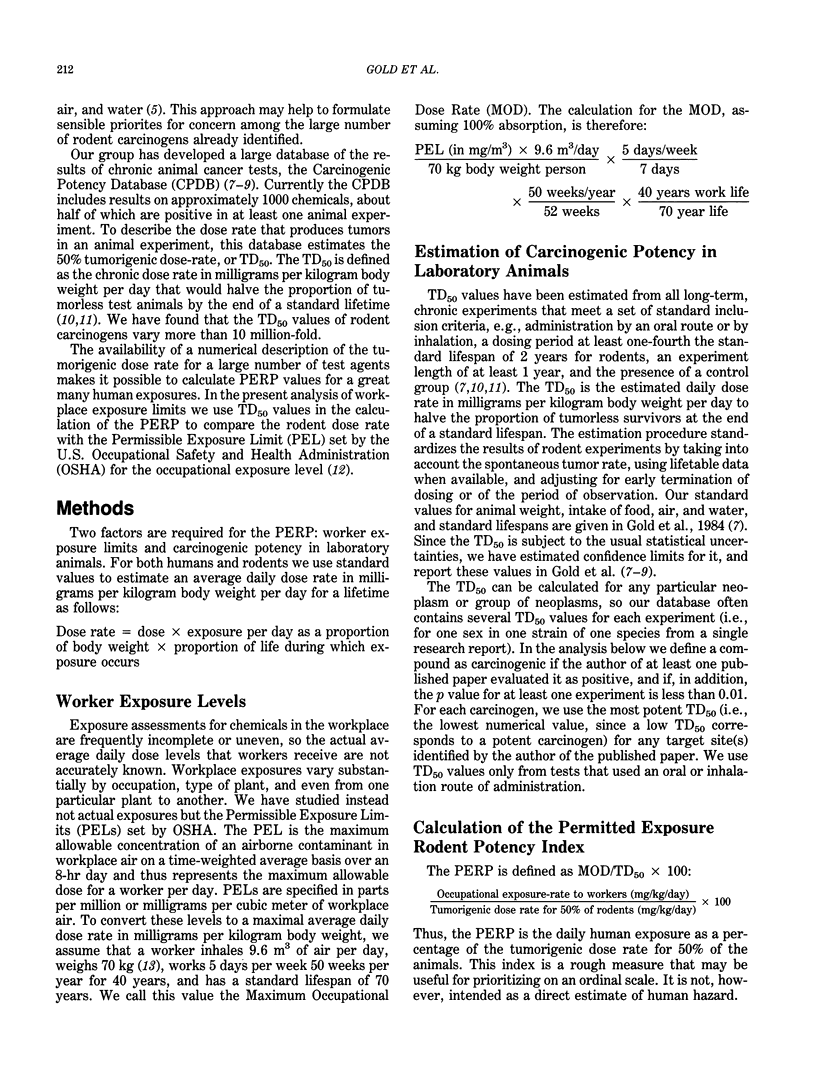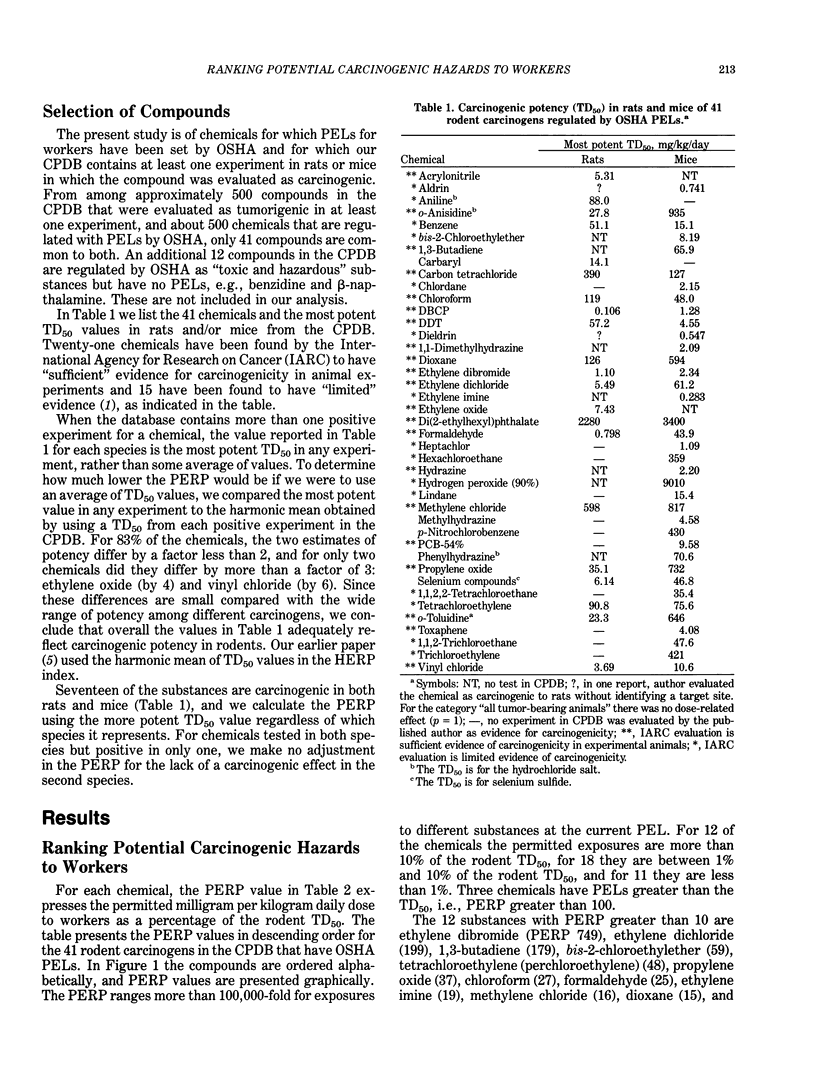Abstract
For 41 chemicals there exist both reasonable data on carcinogenic potency in experimental animals and also a defined Permissible Exposure Level (PEL), which is the upper limit of legally permissible chronic occupational exposure for U.S. workers. These 41 agents are ranked by an index that compares the permitted chronic human exposure to the chronic dose rate that induces tumors in 50% of laboratory animals. This index, the Permitted Exposure/Rodent Potency index, or PERP, does not estimate absolute risks directly, but rather suggests the relative hazards that such substances may pose. The PERP values for these 41 substances differ by more than 100,000-fold from each other. The PERP does not take into account the actual level of exposure or the number of exposed workers. Nevertheless, it might be reasonable to give priority attention to the reduction of allowable worker exposures to substances that appear most hazardous by this index and that some workers may be exposed to full-time near the PEL. Ranked by PERP, these chemicals are: ethylene dibromide, ethylene dichloride, 1,3-butadiene, tetrachloroethylene, propylene oxide, chloroform, formaldehyde, methylene chloride, dioxane, and benzene.
Full text
PDF








Selected References
These references are in PubMed. This may not be the complete list of references from this article.
- Ames B. N., Magaw R., Gold L. S. Ranking possible carcinogenic hazards. Science. 1987 Apr 17;236(4799):271–280. doi: 10.1126/science.3563506. [DOI] [PubMed] [Google Scholar]
- Gold L. S., Sawyer C. B., Magaw R., Backman G. M., de Veciana M., Levinson R., Hooper N. K., Havender W. R., Bernstein L., Peto R. A carcinogenic potency database of the standardized results of animal bioassays. Environ Health Perspect. 1984 Dec;58:9–319. doi: 10.1289/ehp.84589. [DOI] [PMC free article] [PubMed] [Google Scholar]
- Gold L. S., Ward J. M., Bernstein L., Stern B. Association between carcinogenic potency and tumor pathology in rodent carcinogenesis bioassays. Fundam Appl Toxicol. 1986 May;6(4):677–690. doi: 10.1016/0272-0590(86)90181-8. [DOI] [PubMed] [Google Scholar]
- Gold L. S., Wright C., Bernstein L., deVeciana M. Reproducibility of results in "near-replicate" carcinogenesis bioassays. J Natl Cancer Inst. 1987 Jun;78(6):1149–1158. [PubMed] [Google Scholar]
- Gold L. S., de Veciana M., Backman G. M., Magaw R., Lopipero P., Smith M., Blumenthal M., Levinson R., Bernstein L., Ames B. N. Chronological supplement to the Carcinogenic Potency Database: standardized results of animal bioassays published through December 1982. Environ Health Perspect. 1986 Aug;67:161–200. doi: 10.1289/ehp.8667161. [DOI] [PMC free article] [PubMed] [Google Scholar]
- Hooper K., Gold L. S. Ranking the carcinogenic hazards of occupational exposures: Exposure-Potency Index (EPI) values for nine volatile industrial chemicals. Prog Clin Biol Res. 1986;207:217–228. [PubMed] [Google Scholar]
- Ludwig H. R., Meister M. V., Roberts D. R., Cox C. Worker exposure to perchloroethylene in the commercial dry cleaning industry. Am Ind Hyg Assoc J. 1983 Aug;44(8):600–605. doi: 10.1080/15298668391405391. [DOI] [PubMed] [Google Scholar]
- Ott M. G., Scharnweber H. C., Langner R. R. Mortality experience of 161 employees exposed to ethylene dibromide in two production units. Br J Ind Med. 1980 May;37(2):163–168. doi: 10.1136/oem.37.2.163. [DOI] [PMC free article] [PubMed] [Google Scholar]
- Sawyer C., Peto R., Bernstein L., Pike M. C. Calculation of carcinogenic potency from long-term animal carcinogenesis experiments. Biometrics. 1984 Mar;40(1):27–40. [PubMed] [Google Scholar]
- Wilbourn J., Haroun L., Heseltine E., Kaldor J., Partensky C., Vainio H. Response of experimental animals to human carcinogens: an analysis based upon the IARC Monographs programme. Carcinogenesis. 1986 Nov;7(11):1853–1863. doi: 10.1093/carcin/7.11.1853. [DOI] [PubMed] [Google Scholar]


